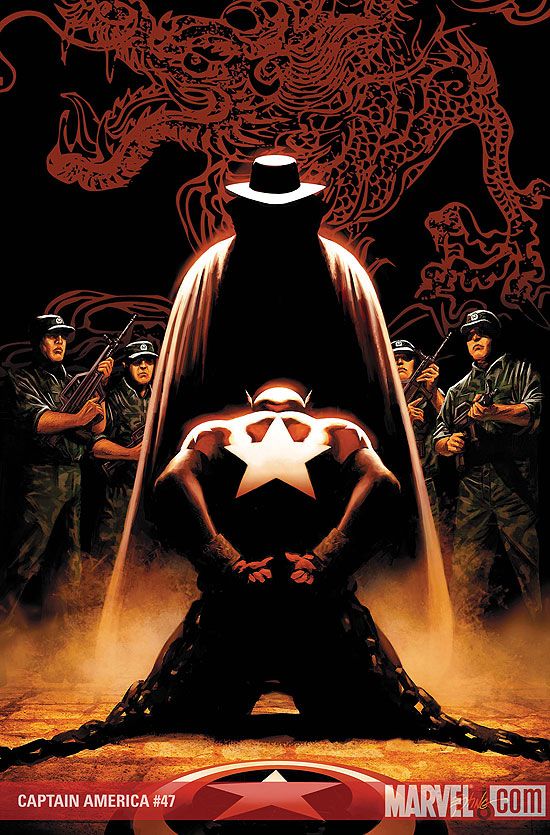Ever since Ed Brubaker wrapped up his ultra-long Red Skull/Arnim Zola conspiracy plot in issue #42, "Captain America" has seemed a bit less urgent than it once did. Without the multi-year machinations, and delicate high-wire act of providing just enough forward momentum to keep the reader up in the air, but not so much as to end the trip abruptly, Brubaker seemed to be writing just another generic Marvel series. Slightly better than generic, perhaps, with the Bucky-learning-how-to-BE-Cap routine, but nothing that matched the heights of issues #1-42.
But that lull only lasted a few months, because with the second installment of the "Old Friends and Enemies" arc, "Captain America" is back. Not Captain America as in Steve Rogers -- there doesn't seem to be any hurry to get him back into the red and blue tights any time soon -- but "Captain America" the series, a.k.a. Brubaker's best superhero work ever.
Talking about the art on Brubaker's "Captain America" comics always seems like a moot point, because no matter who draws the issue -- and here it's the ever-capable Butch Guice -- each issue looks almost exactly the same as the one before it. Frank D'Armata's coloring makes everything look amazingly consistent. I've knocked D'Armata in the past for his overuse of white highlights and heavy-handed coloring, but either I've finally thrown in the towel or I've gotten used to his "Captain America" house style, because I don't mind his work here at all. He does some things that are more expressionistic than normal in this issue, it seems, and I like how it looks. But really, the art is so consistent from issue to issue that it's a non-factor. It's perfect for the super-spy atmosphere, and it looks good. But we expect as much from this series, and we can't help but take it for granted.
What distinguishes this particular issue from the past few, story-wise, is the explicit guilt of Bucky Barnes. Here's a guy -- a former sidekick, yes, but also a former killer, a Soviet assassin -- who stepped into the shoes of Captain America without missing a step. His style is different that Steve Rogers's, sure, but we haven't seen much of Bucky's interior life. Brubaker has been giving us so much action, political intrigue, and relationship-building, that he hasn't really had a chance to show how conflicted Bucky must be. How tormented the former Winter Soldier actually is, even as he wears the garb of the most noble of heroes.
In this issue, the turmoil comes to the fore as Bucky refuses to even wear the Captain America costume on his mission into China. He becomes the Winter Soldier yet again, because he has unresolved issues there. It's part strategic ploy on his part, and part self-loathing. And his conflicting emotions put his allies at risk.
This isn't a comic where Bucky Barnes hesitates and cries because of his inner demons -- he's not the Sentry -- but it is a comic where Brubaker is smart enough to show the complexities of Bucky's new role, and instead of brushing aside the Winter Soldier's violent past, Brubaker uses it to make this comic great again.
Welcome back to form, "Captain America." You deserve it.

